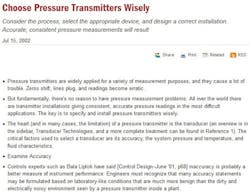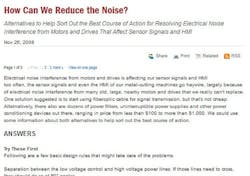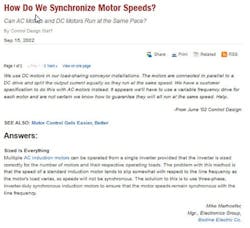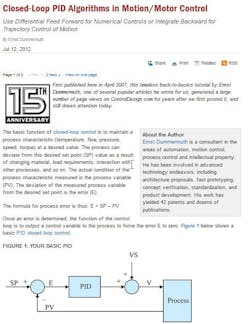The editors of ControlDesign.com always want to know what you, our readers, are most interested in reading on our site. This not only helps us develop our editorial calendar, but it also helps us cover the industry better and present you with the information you want.
It some times amazes how some stories we think won't be of much interest to you, somehow grab your attention. For example, it would be an educated guess to say that our cover stories are the most read articles on our site, but surprise! That's not always the case. Instead, our "Real Answers" seem to always go through the roof.
In 2014, a lot of our readers who found us through search engines where looking for information on wireless Ethernet, common network security keys, industrial networking, stem facts, facts about robots, machine safety, and IEC 61131-3. Yet, our most read article had little to do with the subjects just mentioned. Our number one article was not even written last year (hint: it is seven years old).
Here's our count down to our top ten articles.
Number 10
>
Safety Relay or Safety-Rated PLC?
Safety Applications Become More Complex When More Than Three Inputs Must Be Monitored and Controlled
Number 9
>
Robotic Cake Decorator
Concept Systems Supplies 3-D Vision System Retrofit for a Pair of Robotic Cake Decorating Lines
Number 8
>
Choose Pressure Transmitters Wisely
Consider the process, select the appropriate device, and design a correct installation. Accurate, consistent pressure measurements will result
Number 7
>
Control Panel Design With Maintenance in Mind
Some Considerations for Designers and Builders of Control Panels to Help Ensure the Panels' Maintainability
Number 6
>
Ahead of the Herd: Our 2014 Readers' Choice Award Winners Galloped Away From the Competition
This Year, the Overall Distribution of These Service Recognition Scores Trended Up
Number 5
>
Are PLCs' Days Numbered?
Machines With IP Addresses and Ethernet Links to PC-Based Controls May Simply Eliminate the Need for PLCs Altogether
Number 4
>
How Can We Reduce the Noise?
Alternatives to Help Sort Out the Best Course of Action for Resolving Electrical Noise Interference from Motors and Drives That Affect Sensor Signals and HMI
Number 3
>
Learning IEC 61131-3 Programming Languages
System Integrator Asks Our Readers About Receiving Education on Object-Based Programming
Number 1
Closed-Loop PID Algorithms in Motion/Motor Control
Use Differential Feed Forward for Numerical Controls or Integrate Backward for Trajectory Control of Motion
About the Author
Katherine Bonfante
Katherine Bonfante

Leaders relevant to this article:











